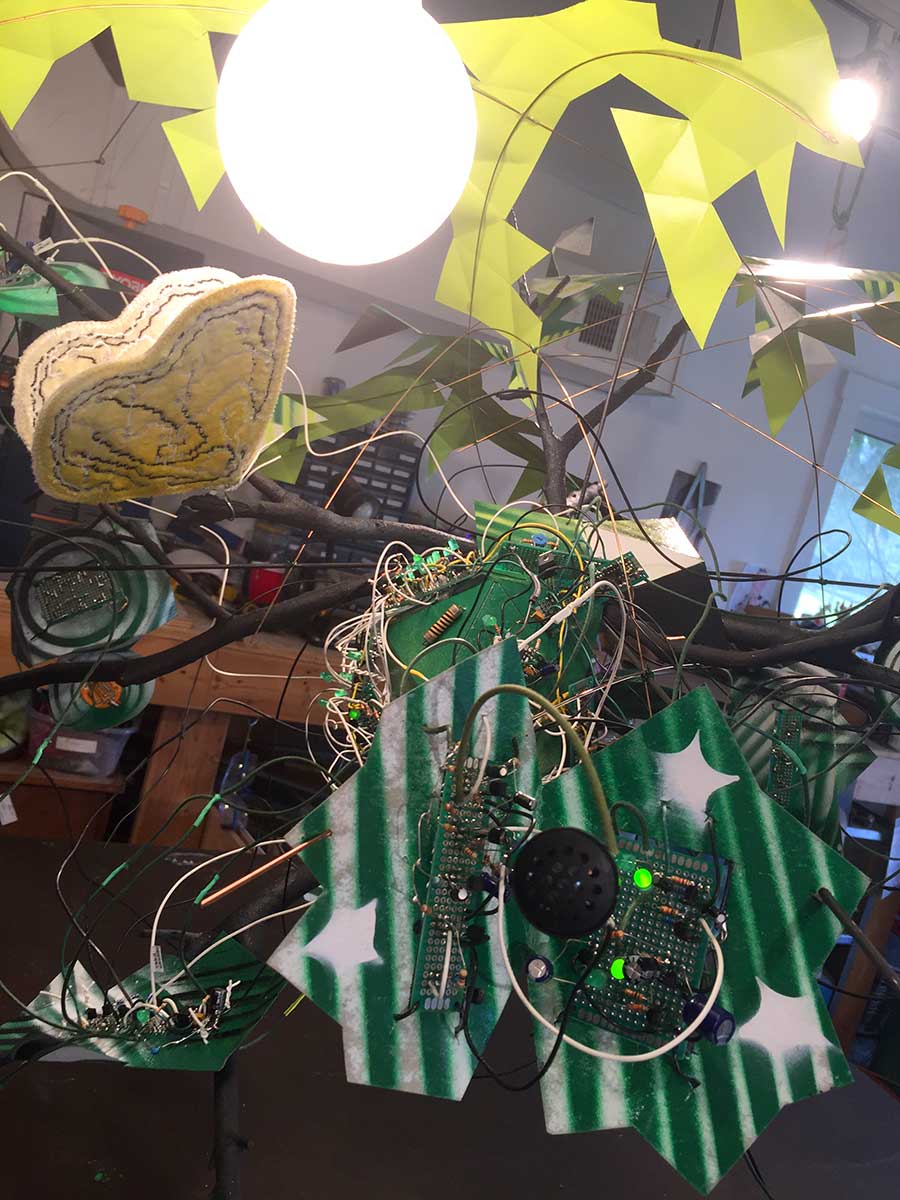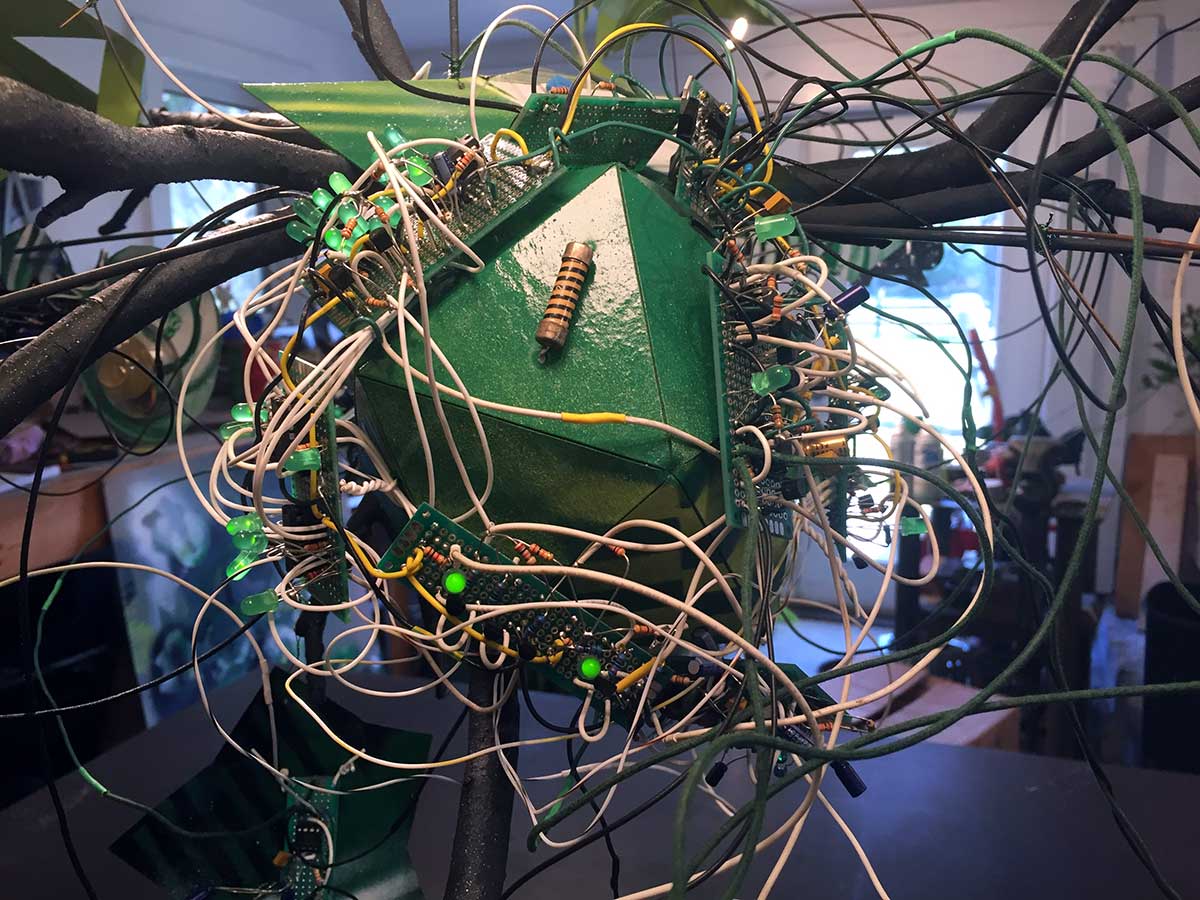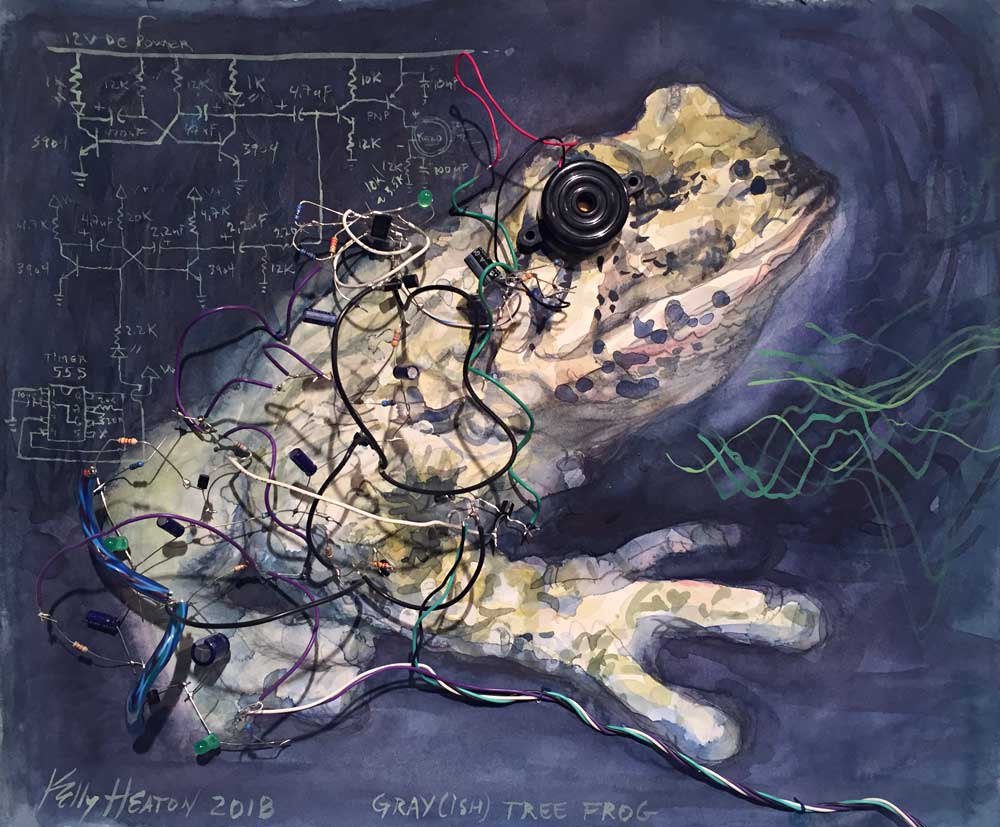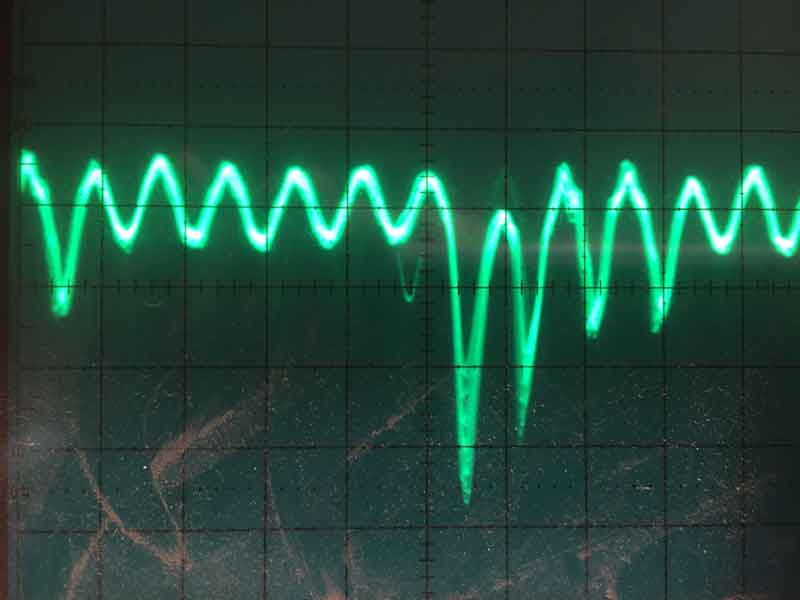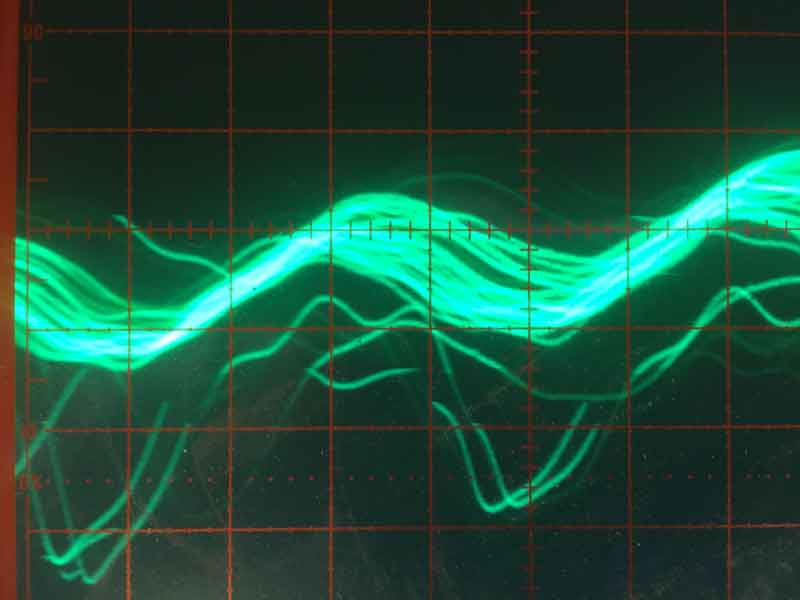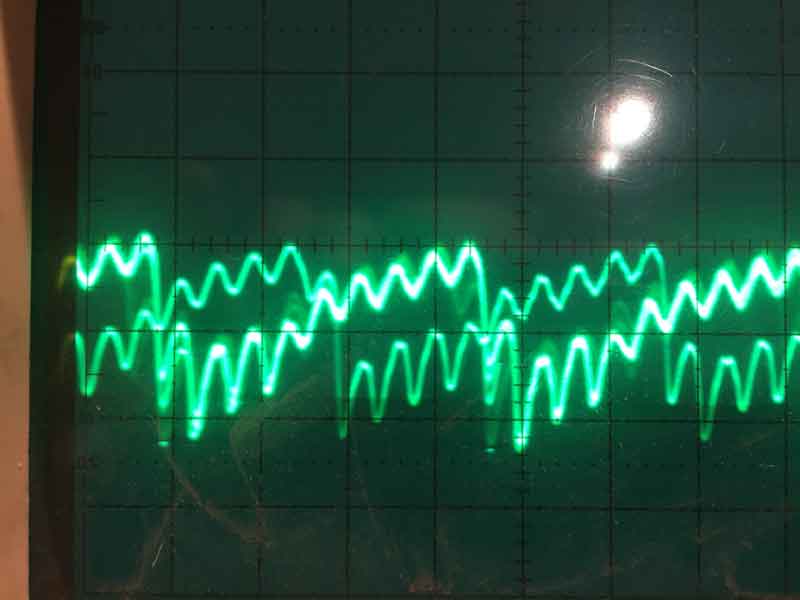The universe is made of energy, frequency, and vibration. Electricity is the Qi of life flowing through humans, birds, and circuits alike. My new "Analog Electronic Crow" (2022) is an evolution of Deep Fake Birdsong from 2020 in which I explore the power of electrically oscillating circuits to manifest intelligent behaviors. This circuit has only six oscillators: five astable multivibrators and one modified Hartley. It's battery operated so you can carry it around. Stay tuned for a product launch this Fall!
music
Electrolier (September night in Virginia) /
I've been working around the clock to finish my Hackaday Prize application and pack for Hacking Nature's Musicians in Mexico. As closure for my recent chapter, the various circuits that I've shown you over the past few weeks have migrated from my bench and into a sculpture titled "Electrolier (September night in Virginia)," 2018. Here is an informal video:
The video quality isn't great... (shot with my iPhone under bad lighting and extremely messy studio)... but hopefully you get the idea. The sculpture contains one instance of my Mother Nature board design, recognizable by the dense tangle of white wires connecting logic gates, and six sound generating "animal circuits" each with its own speaker. The colorful graphics are spray painted cardboard, and everything is hung on a tree structure under a moon (globe pendant bulb). Oh, and that large moth is made out of silk velvet that I dyed and embroidered with an old industrial "Ultramatic" machine. I would have used small molex-style connectors to connect everything, but there was no time.
It's interesting that so many long wires didn't screw up my signals. I credit this to my use of common emitter amplifiers to buffer the signals, and the fact that I'm not drawing much current for anything you see (or hear). The whole sculpture is powered with a 12VDC / 1.5 amp power supply. I also used multiple 0.1 uF ceramic capacitors between power and ground on most of the individual perfboards. It's critical to remember power-ground capacitors when you're dealing with a lot of amplified signals banging on your power rails. I'm careful to avoid really small gauge wire, and I add many pathways to ground ("let ground abound.")
So... now I am packing my electronics bench into a suitcase and praying that security does not detain me at the airport. I'm throwing in packets of desiccant and crossing my fingers that jungle humidity doesn't zap everything. Making analog electronic circuits in the jungle will be interesting to say the least -- stay tuned for the sounds of los músicos de la naturaleza en Quintana Roo!
Kokopelli /
Kokopelli, 2018. Watercolor and pencil on paper, 15" x 11"
I have a mysterious relationship with the spirit Kokopelli. Six years ago, I had a series of dreams in which I saw his iconic figure: a hunchbacked spirit playing the flute and tumbling around in somersaults. I also observed that he had rays of energy coming out of his back and head, sort of like a hedgehog or an armadillo reflecting sunlight. I didn't have any waking history with Kokopelli, so it was strange to "meet" him in a dream. From time to time, he pops up when I'm not expecting him -- this time, adopting the form of a circuit in the desert. This painting depicts two astable multivibrators and a 555 timer that are daisy-chained to generate sound through a piezo disk. Initially, I didn't have an overall form in mind for the circuit. I drew it organically, staying faithful to the electrical connections, because I enjoy the nerdy brain-teaser and the process of discovering shapes in artistic circuitry. Anyway, Kokopelli appeared ... and of course he did! Kokopelli is an electrical being who plays music, similar to my other sound-generating circuits. He also heralds the beginning of Spring, so maybe winter in Virginia is nearly over. What a sign of good luck all ways around.
Gray(ish) Tree Frog, 2018 /
Working on a tree frog. I've got my oscilloscope probe connected to its speaker wire so I can "see" the sound that he makes. (The creaking chair is me, not the frog...) The frog's call is entirely generated by the analog electronic circuit that you see on the front of the painting - like an electronic instrument. Below is the finished piece, "Gray(ish) Tree Frog," 2018. Watercolor and analog electronics on paper.
Above: different views of the frog's call using my oscilloscope. The differences that you see are consequent of the time and/or voltage interval that I used to adjust the display (like focusing in and out of sound). In other words, they're all the same signal, just different ways of looking at it.
Millennial Pop Star (cheap amplifier) /
open studio: oil drums /
Oil drums, 2016. Digital photo collage. Kelly Heaton
A mountain of empty oil drums are a drum circle waiting to happen.
wild card: the great stalacpipe organ /
This is the first ever composition for The Great Stalacpipe Organ, the largest musical instrument in the world, located deep in the caverns of Luray, Virginia. The Organ consists of hand-tuned ancient stalactites of varying sizes that are hit with solenoid-actuated rubber mallets. The mallets are controlled by a custom made pipe organ console.
Leland W. Sprinkle designed and implemented the organ during a 3-year period around 1956.
From Wikipedia:
"Two accounts of Sprinkle's conception of the instrument are known. From the discovery of Luray Caverns in 1878 onward, the favorable attributes of the formations for creating musical tones were well known. One of the earliest references to performances of lithophone music in Luray Caverns comes from the tour led by co-discoverer Andrew Campbell for a group sent by the Smithsonian Institution in 1880. According to a summary of the report incorporated into the earliest printed guides to Luray Caverns, Campbell surprised the group by playing a tune on a formation, probably the one that came to be known as the Organ. By the early 20th century, performances of folk tunes, hymns, and other well-known pieces were a regular part of guided tours. According to the modern guided tour, Sprinkle is said to have conceived the idea for the Great Stalacpipe Organ during one of these performances when he toured Luray Caverns on his son's birthday in 1954.
A variation of the story of the instrument's conception is that Sprinkle's son Robert hit his head on a stalactite, producing a tone that inspired Sprinkle to invent the instrument. This account is the one published in a Meccano Magazine article from 1961 and in an article in the 1959 Rosicrucian Digest."




